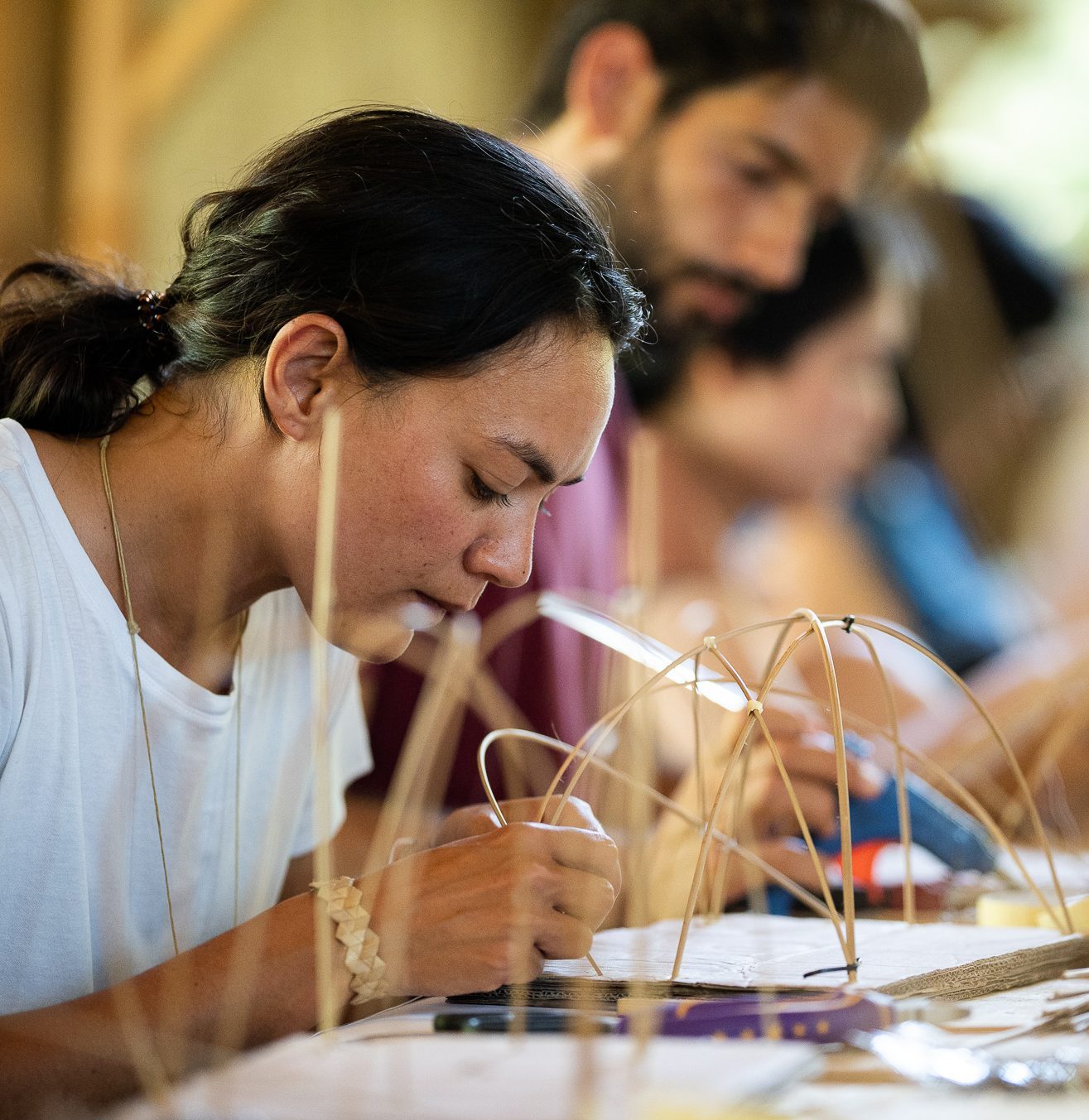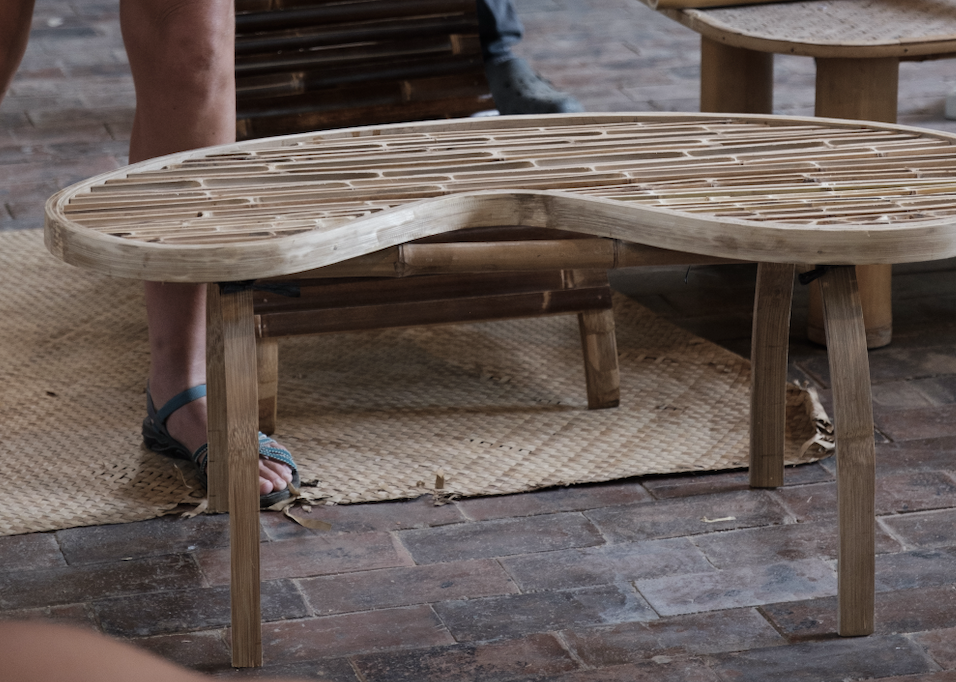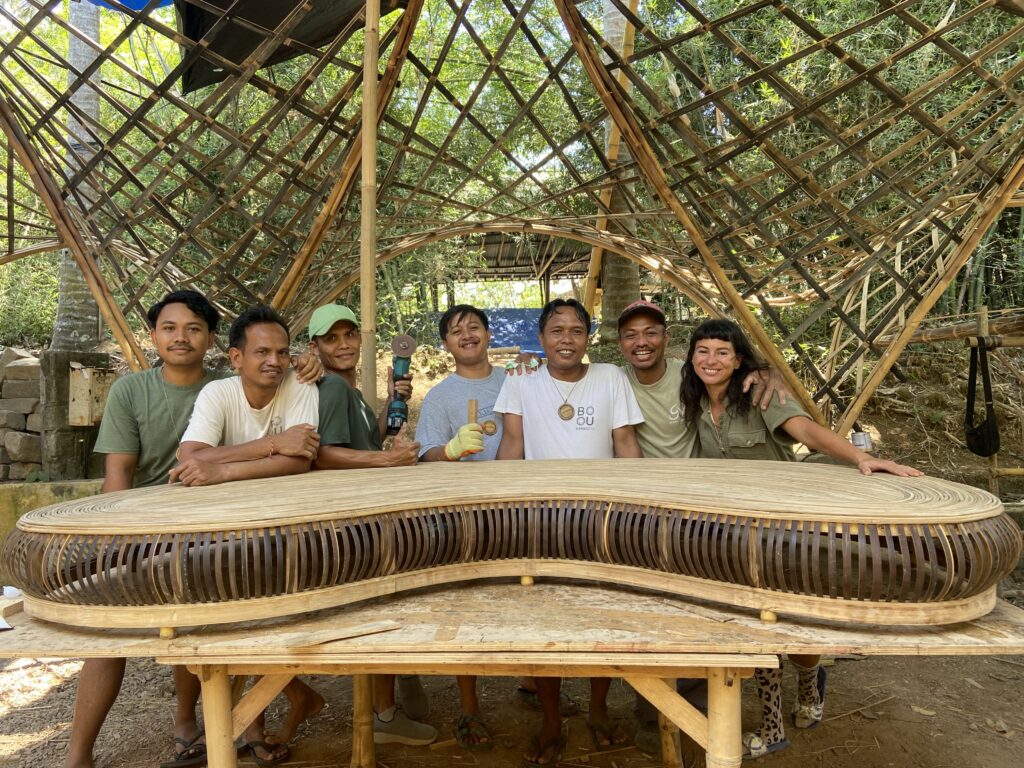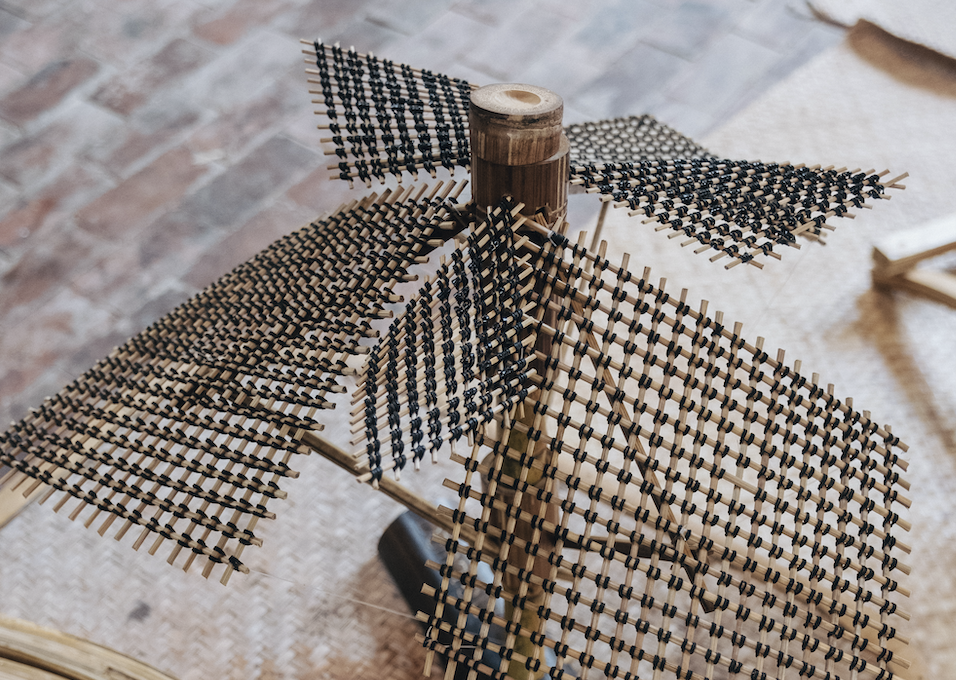Designing A Bamboo Pavilion Inspired By Asian Bamboo Scaffolding
By Bea Valdes | August 9, 2022 | Alumni -
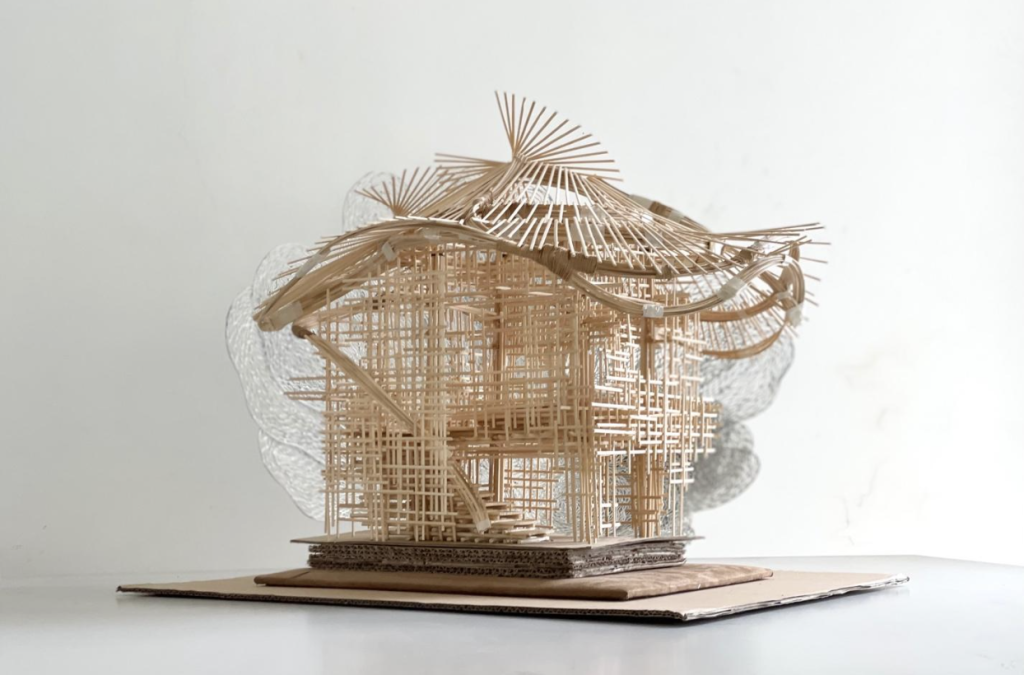
Follow Bea Valdes’ story of designing a bamboo pavilion inspired by vernacular architecture from the Philippines and traditional scaffolding during the Bamboo U Online Course
I am Bea Valdes, a designer with a Manila Based workshop that specializes in beadwork and embroidery. We create pieces that range from unique jewelry & accessories to bespoke clothing to large-scale public artworks, always with a focus on the craft of the hand.
The idea of being able to learn about a single material, Bamboo, literally from the ground up was what motivated me to join the Bamboo U Online Course. As a designer, there is a constant search for the meaningful relationships between objects and their makers, their menders, their minders- the human stories as told through the manipulation of materials, and through gestures of design.
Each module of the Bamboo U Online Course in itself is a starting point for further discoveries. To learn that the quality of what we build is connected to how the farmers nurture the soil, to the ways that bamboo plays into a larger planetary, biodiversity story, to how the generational skills and the wisdom of local craftsmen coupled with computational analysis of today’s technology can open up such broad options for design strategies, to how every aspect links to the next - this was the bounty that we discovered throughout the 11 weeks. The insights from this holistic approach guided me towards an inquiry of bamboo’s context in my local setting.

The Bamboo Building Concept
The pavilion is imagined to be on a hilltop beach property overlooking the sea. It is approximately 14 meters by 14 meters, on an existing concrete foundation. Our intentions are to create a space for special events- a place for intimate gatherings, to bind this particular landscape to the guest's memory- as a place of personal significance and meaning.
Next, we hope to craft responsibly, with local elements: to use bamboo; an abundant, circular material, in a manner that makes people imagine the panorama of its potential and capabilities. When considering what bamboo means in our context, a few concepts emerged. The initial inquiry was sparked by the quote, "memory is the scaffolding upon which all mental life is constructed." ~ Gerald Fischbach. This prompted a look into bamboo’s use as scaffolding in the construction of architecture, common in Asian countries. The way bamboo serves, then is dismantled, and then disappears- The concept developed as an homage to making the essential invisible, visible.

The first sketches also revealed a nod towards the transparency of traditional Philippine Capiz windows, which are made of a specie of local shell, framed in wood and always expressed in a grid pattern. We hoped to expand the idea of transparency, by allowing for spaces, by having no defined walls to allow for a mannerism of floating.

This impression of the traditional, with subtle references to familiar form, framework, and features, developed into the core idea of creating a structure articulated through a contemporary bamboo language.
The development of the structure evolved organically, through the constant guidance of Cécile Durand, our Bamboo U tutor, and enriched by the weekly sessions with global experts in a wide variety of fields like taxonomy, joinery, construction, and engineering.
Developing the Structural Bamboo Model
Through the experiments with the model, the idea to craft an interior experience of balance without symmetry in the way nature generates harmony, with the layering of wild, irregular elements. Like scaffolding, the build explores densities, volumes and persistent lightness. The bamboo poles revealed familiar outlines, a timber sketch of traditional aspects and appearances.
For the wall elements, round poles of Dendrocalamus asper are proposed, with joinery of bamboo dowels and lashing, honoring the simplest of techniques. This was to be able to create an accessible design that would be executed using basic tools and joinery.
“The learnings from the carpentry and joinery lessons were invaluable in the decision making process of how to fabricate the structure. The videos shared were an inspiring testament to skill and devotion of the bamboo artisans.”
The emphasis on a construction based on craft is a significant reminder of why we need to build things of value. Practical knowledge of aspects like the roof overhang needed to protect one’s structure from rain, or the techniques one can utilize to express a curve, constantly refined the design to help it achieve structural permanence.
The shape of the roof was rooted in the Philippine Salakot- a traditional straw woven dome-shaped hat- to act as both shelter and showcase. The oversize scale of the structure shifts the perception of the form from residential to public. The nuanced proportion and capacity, the ceiling height, and the volume of open space bring a sense of occasion, of community to what has its origins in more intimate, humble dimensions.
Throughout the course, there was a notion of listening to what the material wants to be, and creating from one’s own local landscape of experience.

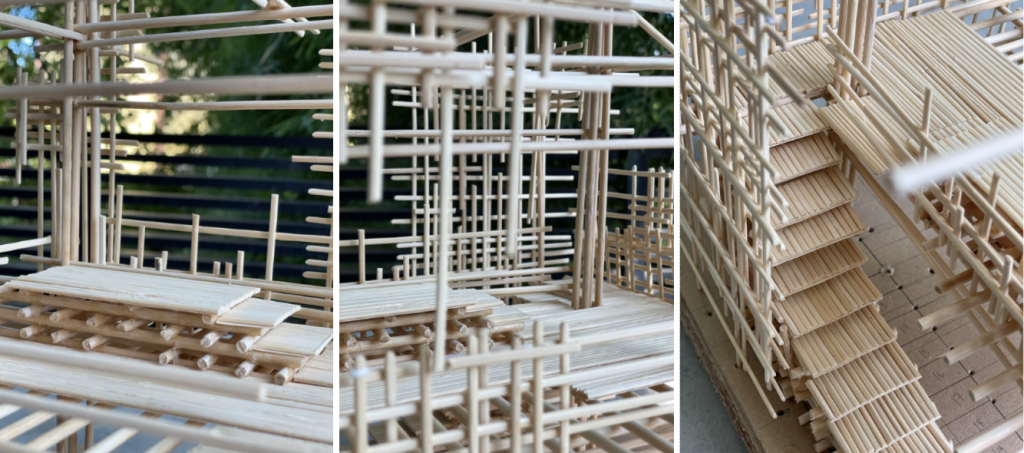
Like scaffolding, the build explores densities, volumes, and persistent lightness. The lines became familiar outlines, a sketch of traditional aspects and appearances.
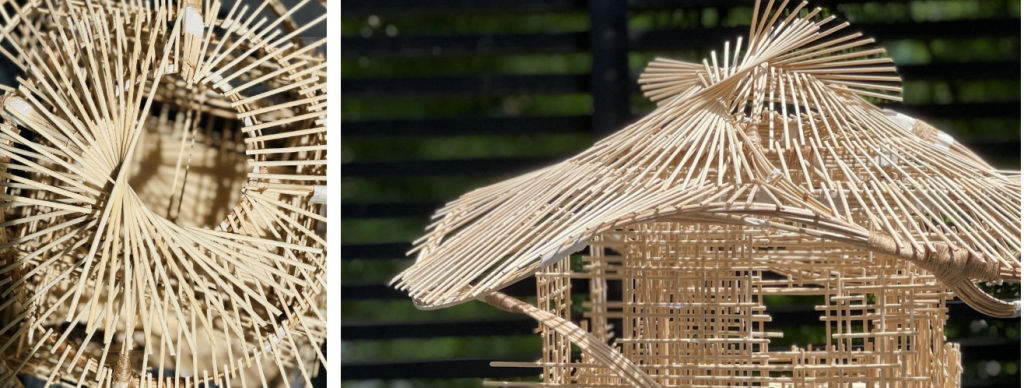

Though my project was primarily informed by the concepts of Scaffolding and Memory- as it evolved, the design bared its bones in Filipino vernacular architecture. With typical characteristics, the elevated stilt house, the grid that holds the walls together, the thatched roof - these were all articulated through a contemporary Bamboo language.
The pavilion, crafted from a point of respect and nostalgia, is offered for celebrating moments between the surroundings and the structure, a relationship that is permeable. The view, the sunlight, and the wind will all pass through with shifting intensities. Its lightness, its rhythm, the use of round poles that have the latitude to keep the shape formed by their unique growth story, their affinity absent of perfect symmetry - these are celebrated expressions of the Bamboo's qualities.
From all the modules, one can imagine that bamboo is, in a way, nature's reciprocal towers. Offering its strength as post and beams in our homes throughout history, acting as ballast for our native boats, while outside, roadside, untended and wild, its roots continue to bind our soil together.
Throughout the course, the participants were encouraged to learn from their local perspective of bamboo, discover the insights from their fellow students and discover their personal design expressions. From taxonomy to technology, the bounty shared by Bamboo U focused holistically on Bamboo as yesterday's, today's, and tomorrow's timber. With Bamboo as a system and beacon, we harvest these points of intersection that look through the past and can shape our view of a more sustainable future.


A founder of a brand with two decades worth in luxury accessories, specializing in artisan work. Textile and mixed media artist specializing in public spaces both locally and internationally. Recently appointed as an editor for a fashion magazine.
June 7-18, 2024
The 11 Day Bamboo Build & Design Course in Bali
In 11 days, we'll show you how to build bamboo structures we’ll share all that it takes to build with nature.
April 26, 2024
The Fundamentals of Building with Bamboo Online Course
All the fundamentals you need to get you started working with bamboo. Deep dive into cinematic videos and step-by-step guides that will provide you with a strong understanding of bamboo as a design and building material.











